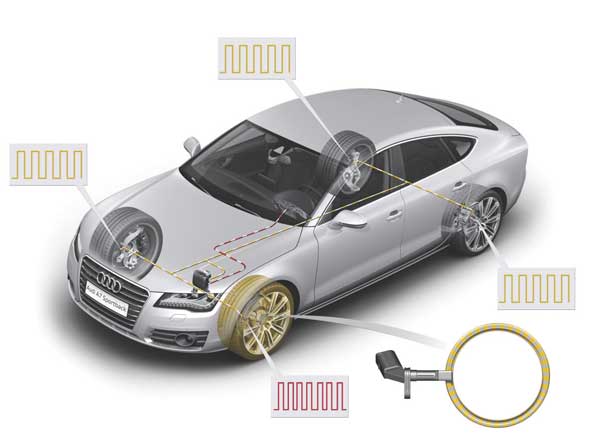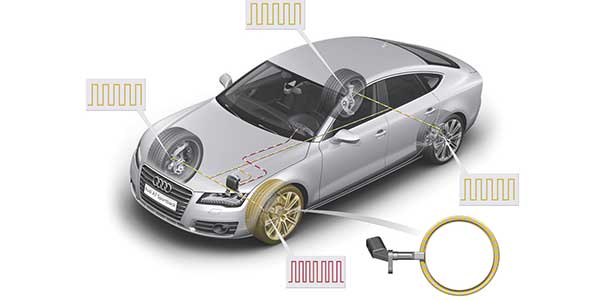
Audi Tire Pressure Monitoring Systems (TPMS) are some of the easiest to reset and relearn. The automaker has used both indirect and direct systems during the past decade. Both systems use the same relearn procedure that involves accessing the TPMS settings through the driver information center or infotainment system. The only difference between direct and indirect systems is the last step that may involve driving continuously for 10 minutes or allowing the vehicle to sit for either 10 or 20 minutes.
Before any relearn or reset procedure is performed on a direct or indirect system, set the tires to the correct pressure. When the system is reset, it uses this pressure as the reference pressure. The correct tire pressure is located on the door jamb or gas door.
Note: This pressure is configured for 72º F. If you are filling the tires in a warm shop and the average outside temperature is 40º F, you should add 1 psi for every 10 degrees of temperature change, or 3 psi, in this case.
If the internal pressure is not correct, the system might assume an incorrect pressure is the correct pressure. This can cause the light to come on if there is a significant change in the weather and outside temperature.
Some Audi models allow for a second set of IDs to be stored in the system for winter tires. Typically, these can be found on higher-end models with direct TPMS.
Direct TPMS systems use the data from the wheel speed sensors to determine the pressure by measuring the rolling circumference. The majority of these systems use an active wheel speed sensor with a magnetic tone ring located on the inboard bearing seal. If metal debris sticks to the ring, it can cause false readings for the ABS and TPMS system.
Do You Need A Dedicated TPMS Tool?
Even though a reset procedure on most Audi vehicles can be carried out without having to activate the sensors, a dedicated TPMS tool can identify the type of system you are dealing with and the correct process right in the bay. The tool can identify how to access the menus in the infotainment system or driver information center, and indicate if the vehicle has to sit or be taken for a drive. It can even tell you if the spare has a TPMS sensor.
The other advantage of a tool comes into play with sensor replacement. Most dedicated TPMS tools can read weak or damaged sensors and the ID can be programmed onto a blank sensor. If a sensor is no longer transmitting, the tool can connect to the OBDII port and a new ID can be programmed into the TPMS module, or the existing ID that is missing can be obtained and burned onto the new sensor.
Another advantage of a dedicated TPMS tool is evident in the diagnostic process. These tools can activate sensors and directly read what the sensor is transmitting. In the case of newer Audi TPMS sensors, this can include battery information.














